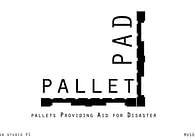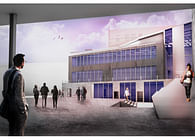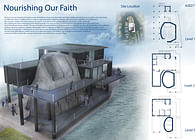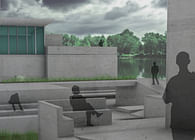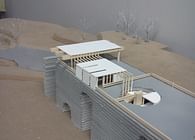
Topic Brief:
Our ability to perceive is deeply rooted in our capacity to interpret our surroundings and relate them to a specific human sensory or mental complex. We perceive objects not only through a visual construct but also in a tactile and auditory manner. Our brains monitor our perceptions, conscious, memories, and emotions. As we perceive things, we are at the same time creating them, perception is directly linked to imagination.
Architecture can become a mental extension of our capacity to perceive. Our human existence can be amplified through spatial, formal and material hierarchies. By focusing the attention on specific elements in space the viewer can become conscious and aware of an unknown relationship in space. The range of tonalities of light and darkness enforce spatial depth. Material and spatial configurations heightened by light and shadow will narrow our attention and create an internal focus. This inward focus triggers specific mental responses and interpretations, uncovering for us a unique perception of our sensitized environments and providing us a sense of curiosity.
Narrative:
From the outside the building sits in silence, a blank canvas danced upon by shadows. The central masses detach from the adjacent context appearing weightless, floating in space. The focus is then drawn towards the peeling back of the exterior walls, offering glimpses, moments of the interior activity of the space. The contrast of the active interior creates a rhythm with the ever-changing concrete canvas of light and shadow.. The slow protrusion of the building outward over the cityscape invokes the sensation of a breach towards the monumentality of the buildings action, only to be contrasted by the silent sensation of curiosity of what lies within. The building’s gravitational force swallows you, pulling you deeper in towards the entry. The hierarchy of form, space and light is on full display through the entry procession of the foundation. The massive blank canvas is quickly changed into a light filled void, focusing our attention upward and once again adding to our curiosity of what lies ahead.
The inversion of the spatial relationship between building and human, elicits a sensation of inclusion, allowing our perception of the space to change. From the exterior of the foundation, the human is isolated and disconnected from the spatial hierarchies. The only connection is through the elicitation of the feeling of curiosity, memory, and imagination. Passing into the building, within the day lit void, the human activates the space creating a sense of scale and motive. The human fills the void within the building, as the void becomes a metaphor of our lost focus, reflections, emotions and beliefs. As we enter into the void, and further process down it, we become reminded of the emptiness of our perception, memories and ideas. The blankness of the the atrium and interstitial spaces are painted with the tonalities of light and shadow offering an immaterial sense, strengthening the experience of the space. Our own experiences and perceptions give the space life, filling the “void” with human qualities. The social inclusion with the atrium of the foundation provides us with an example of the imaginative qualities of the space, our minds are left to wander as we process within the void. The literal actions of the space are carried out through the changing of light and shadow through the void, while our phenomonlogical actions of interpretation, thought and perception drive the experience of the space.
The contrast between the heavy, weightless and perceptive exterior and the emptied void filled with human imagination, wonder and experience creates a strong unity through the building and program: discovery. Our minds are tested through the focus and increased curiosity that the Kahn Foundation offers us from outside. As we become hooked and intrigued by this sensation our perceptions are changed as we activate the empty heart within, filling it with our own imaginations, thoughts, experiences. This sensation triggers an internal focus and discovery of ourself within the greater context of our world.
As Kahn believed, “Architecture is the reaching out for the truth”, this foundation dedicated to his work, accomplishments and beliefs allows for the social inclusion of discovery, giving every person the opportunity to imagine, experience and discover the truth of oneself. As Kahn succeeded in mastering the sensation of space, so to his foundation offers the opportunity to find the truth, become curious and uncover a unique perception of our sensitized environments.
Status: School Project
Location: Philadelphia, PA, US
Additional Credits: Studio Instructor: Miguel Calvo Salve, Ph.D




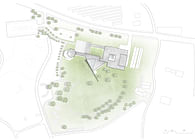
![Internal [PRO] jection Internal [PRO] jection](https://archinect.gumlet.io/uploads/6f/6f8dxonhxdpfhxpz.jpg?fit=crop&auto=compress%2Cformat&enlarge=true&crop=entropy&w=195&h=140)
